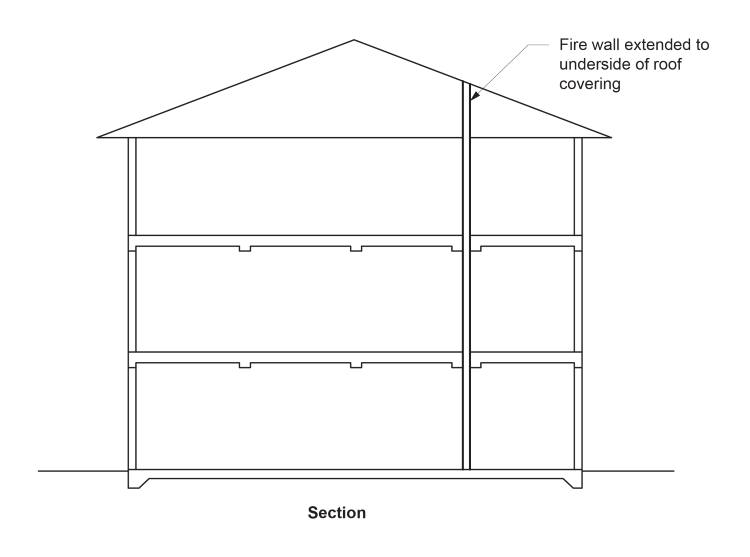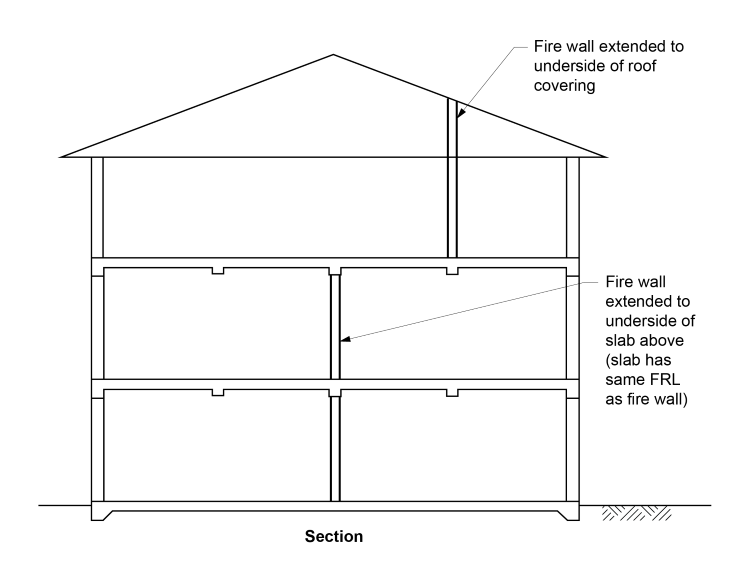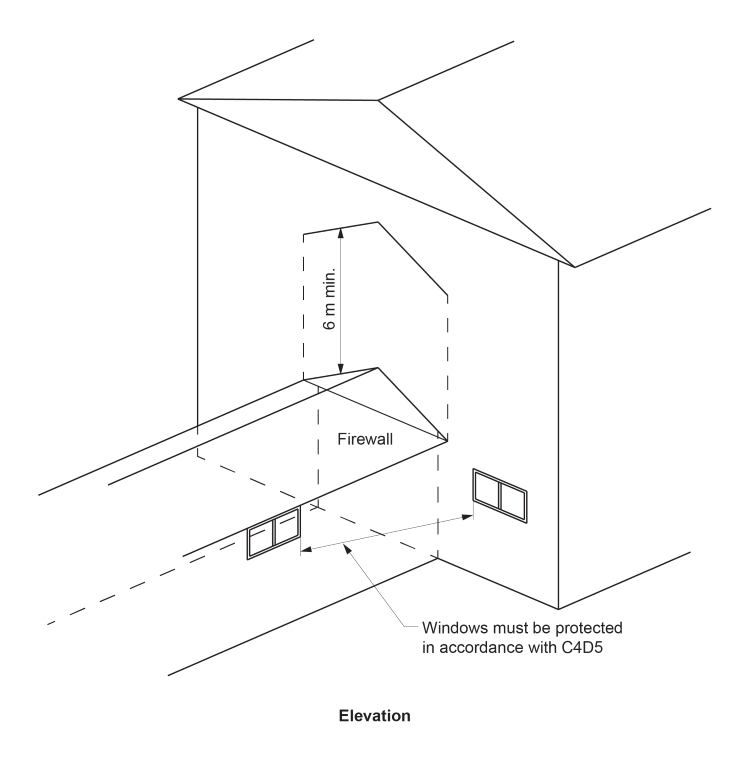To explain that buildings separated by a fire wall may be considered as fire compartments or be regarded as separate buildings.
C3D8 Separation by fire walls
Construction
C3D8(1) outlines how a fire wall is to be constructed.
C3D8(1)(a) sets out the required FRL of a fire wall. If any part adjoining the fire wall is required to have a higher FRL, the fire wall must achieve the higher FRL. The exception occurs if an adjoining part is an open-deck or sprinklered carpark that complies with the concessions set out in S5C19(3), S5C22(3) and S5C25(3) of Specification 5.
C3D8(1)(b) requires all openings in fire walls to not reduce the required FRL of Specification 5 for the fire wall, except where permitted by Part C4. In effect, this provision is referring to:
- C4D6 for doorways in fire walls;
- C4D7 for sliding doors in fire walls;
- C4D8 if the fire wall forms separation required for horizontal exits; and
- C4D15 for openings for service penetrations.
C3D8(1)(c) indicates which building elements are permitted to pass through or cross a fire wall and prohibits the use of any building element if it reduces the fire wall’s FRL below that required. Hence, elements that pass through or cross a fire wall have to be part of the fire wall’s tested prototype.
C3D8(1)(c) grants an exemption to its requirements for small roof battens and roof sarking.
Separation of buildings
C3D8(2) indicates the extent a fire wall divides a building into separate buildings for the Deemed-to-Satisfy Provisions of Sections C, D and E (see Figure C3D8a).
The fire wall must extend through all storeys and similar spaces which are common to the subject parts of the building, and any adjoining part of the building, through to the underside of any roof covering (see C3D8(2)(b)).
C3D8(2) outlines the requirements for the extentof a fire wall that separates adjoining parts of a building wherethe roofs are at different levels.
If buildings, with different roof levels divided by a fire wall, are to be treated as two separate buildings, the fire wall must extend up to the underside of the highest roof or not less than 6 m above the covering of the lowest roof.
Alternatively, C3D8(2) allows the fire wall not to extend 6 m above the lower roof if the roof to the lower level building:
- has the FRL prescribed for the fire wall by Specification 5 and no openings are located within 3 m of any wall located above the lower roof; or
- the lower roof is non-combustible and the part of the building below has a sprinkler system complying with Specification 17 (other than a FPAA101D or FPAA101H system) installed.
Separation of fire compartments
C3D8(3) clarifies that a fire wall built in accordance with C3D8(1) can be considered to divide a building into different fire compartments (see Figure C3D8b).
For a fire wall to compartment a building it must extend to the underside of any roof covering or between floors that have an equivalent FRL to the fire wall.
If the building is being separated into fire compartments by a fire wall have different roof levels there is no requirement to extend the fire wall to the underside of the higher roof level or above the lower roof level. This is because the fire wall serves as a means to limit the floor area of the building. When a fire wall is applied in this case, the building cannot be treated as two separate buildings for the purpose of Sections C, D and E of the BCA.
Figure C3D8b illustrates the case where two fire walls divide storeys but do not align, therefore not meeting the requirements of C3D8(2). In this case, the building cannot be regarded as two buildings divided by a fire wall.
Figure C3D8a: Example of method of separating a building by a fire wall in accordance with C3D8(2)(b)

Figure C3D8b: Example of a method of separating a building into fire compartments by a fire wall in accordance with C3D8(3)

Figure C3D8c: Example of fire wall used as an external wall to separate a building in accordance with C3D8(2)(c)
